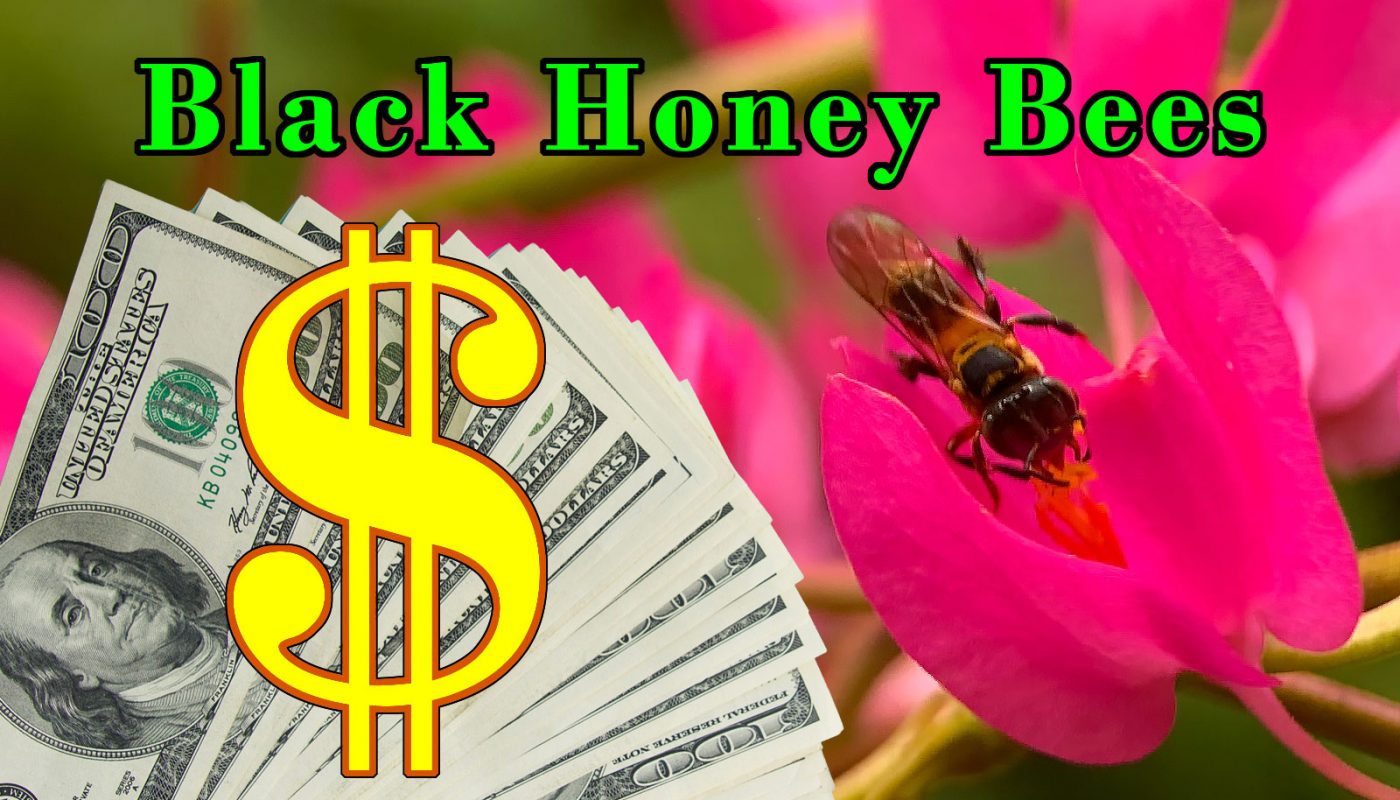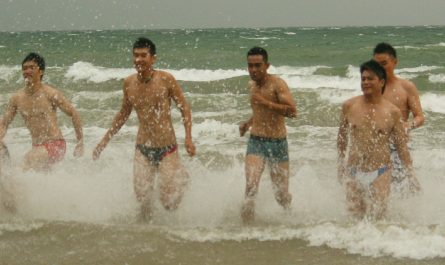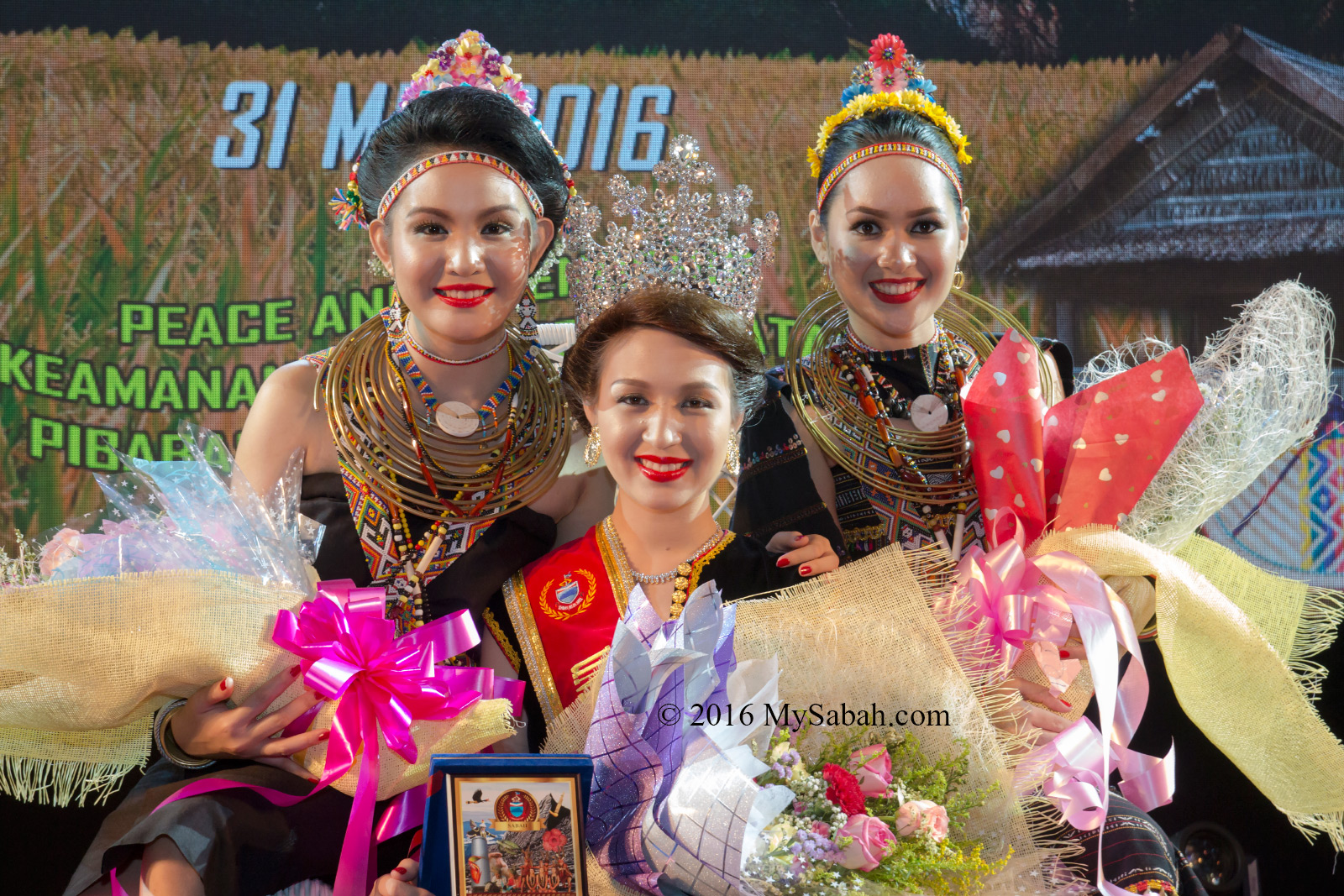Today I want to introduce some sweethearts to you. These little honey make money and healthy food for you. They are stingless bees (or meliponines), the honeybees that don’t sting. Stingless bee is known as Kelulut in Malaysia and Tantadan (local Dusun name) in Sabah. Belonging to the family Apida, kelulut is closely related to honey bees, and they are also the honey producer and important pollinators in tropical and subtropical regions.
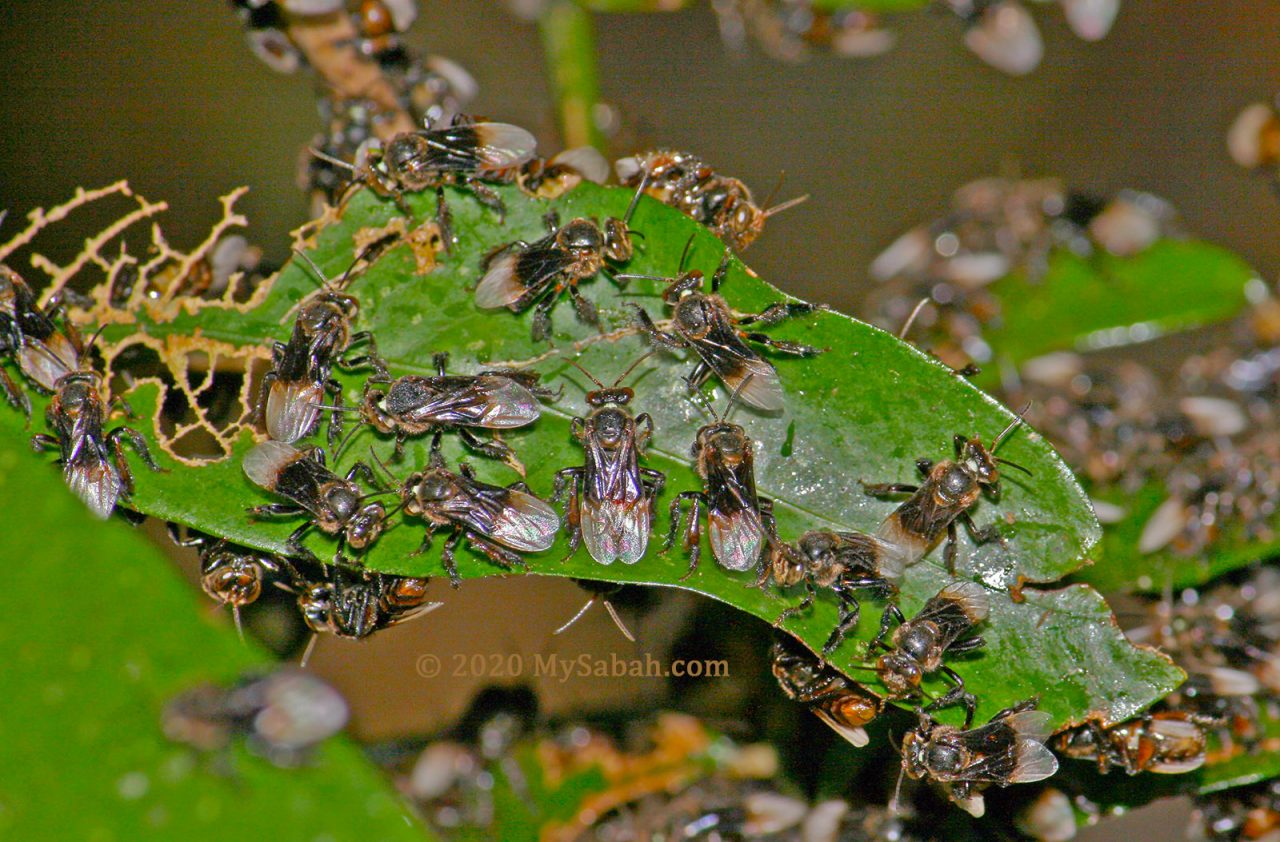
Stingless bees are very common in Sabah. If you have a garden or orchard, there is a 80% chance that you could spot a kelulut hive nearby. Usually they build their nests in hollow trunks, wall cavities, and even crevices in your house wall. Stingless bees are always found busy harvesting nectar in the countryside. If you sweat a lot, some of them would land on your skin to collect salt.
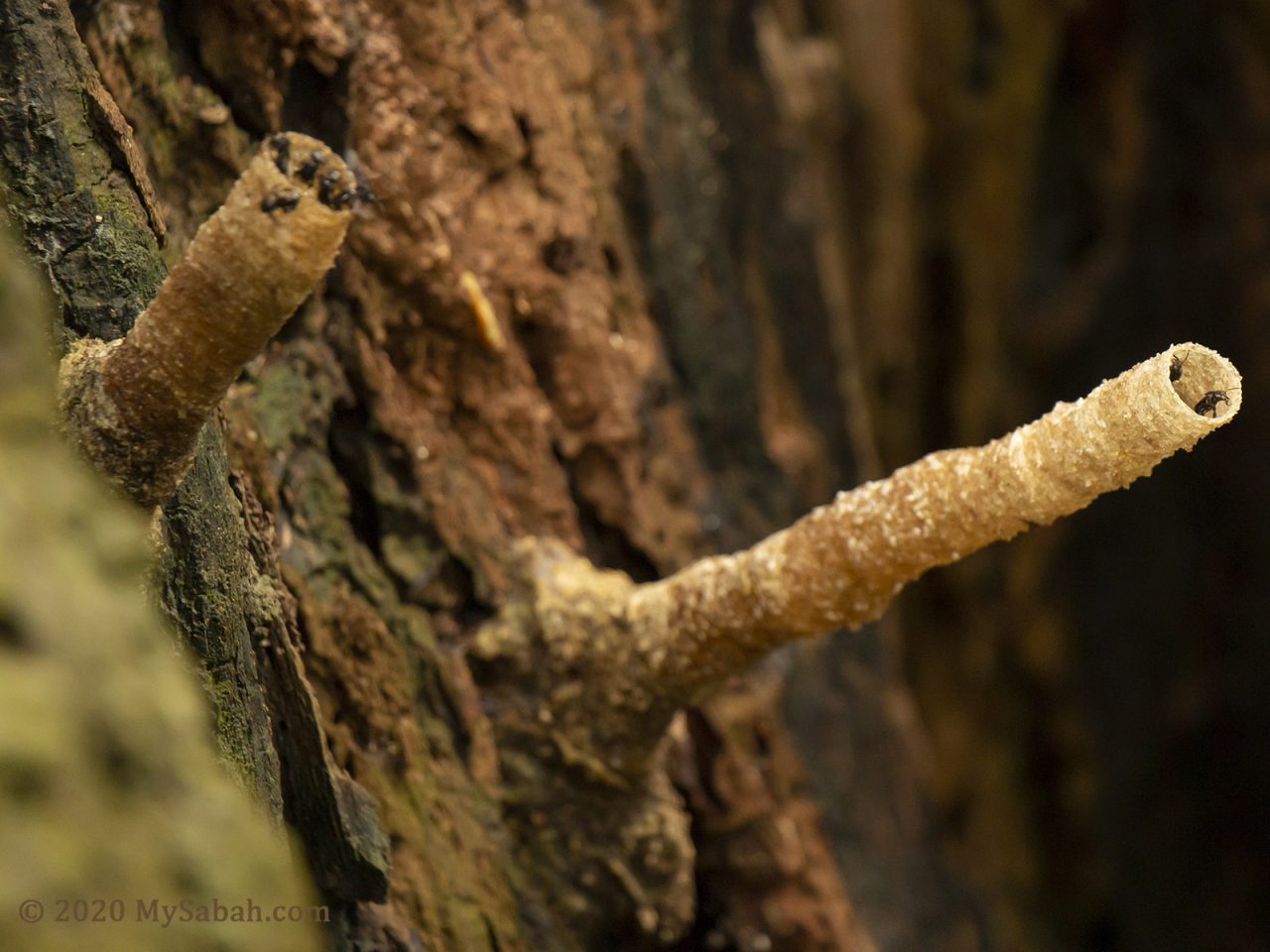
Stingless bees are only 1 centimetre or less in body length. Their tiny size allows them to access small flowers. Though they produce honey in small quantity, kelulut honey is more nutritious and highly priced. It is a trend that more and more Sabah village house farms kelulut, as the kelulut honey is in good demand and can generate hundred to thousands dollars of side income easily every month.
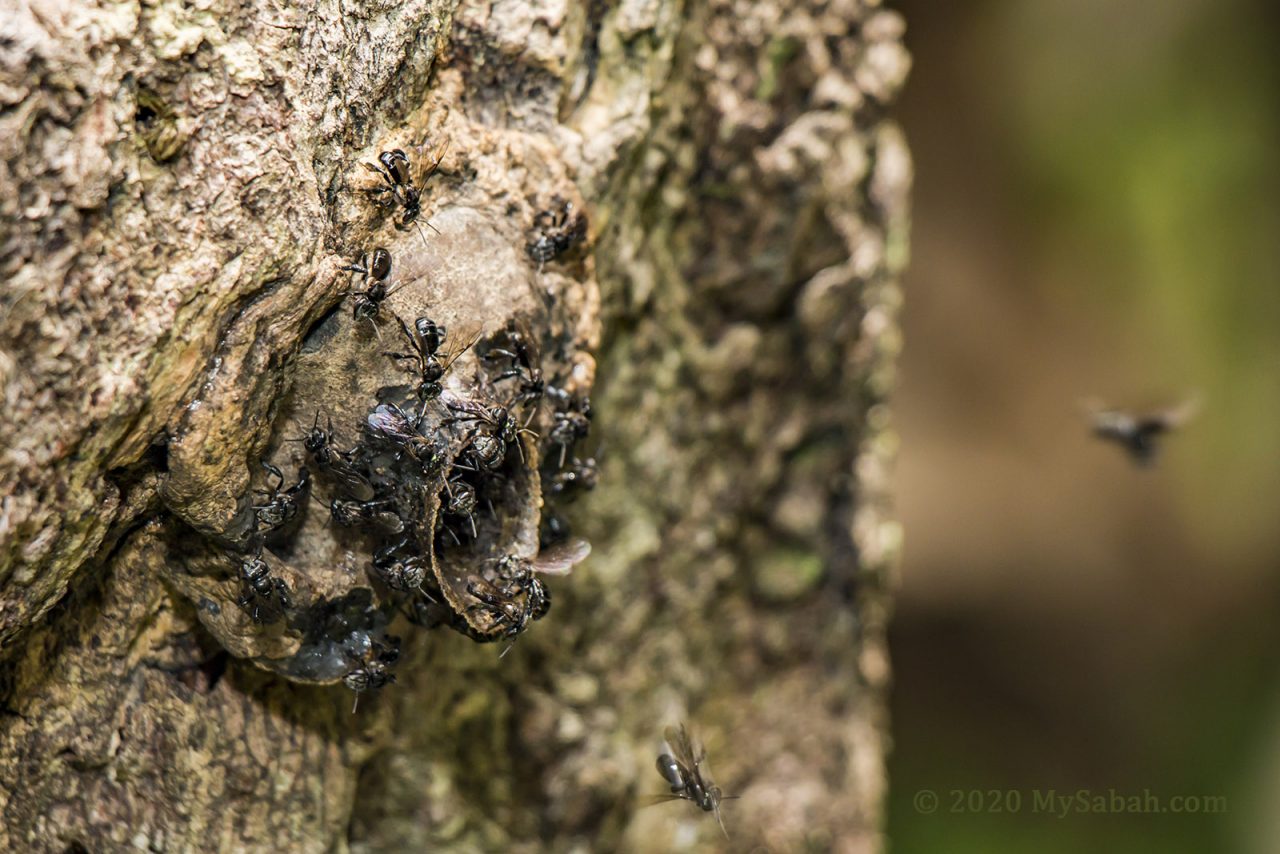
Honey Bee Vs Kelulut. Which Honey is Better?
Honey produced by stingless bees has many names such as Meliponine honey, pot honey, sugarbag honey (in Australia), and kelulut honey (in Malaysia). In Malaysia, kelulut honey is acclaimed as a honey healthier than normal honey. The following are some comparisons of both honey:
1. Taste
As you know, honeybee honey is sweet. Kelulut honey is sourish sweet. Usually sweetness is the base taste, and it mixes with varied degree of sourness, and even bitterness, which is greatly depend on the flowers or fruit trees visited by kelulut. Stingless bees store their honey in honey pots which are made of cerumen, produced from the bee’s saliva mixed with pollen, plant resins and flowers, and this chemically affects the taste. Sometimes its honey has slight fruit flavour or herbal aroma.
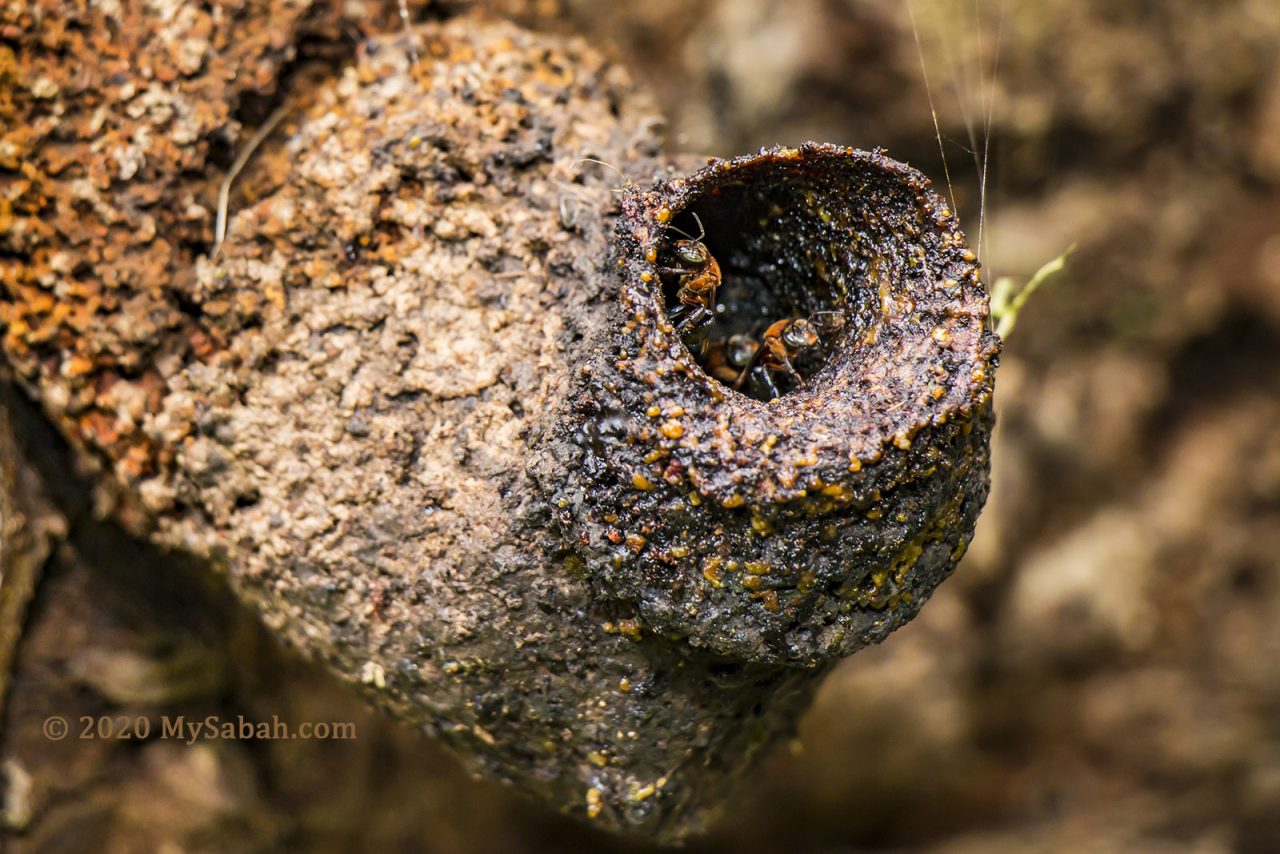
2. Nectar and Viscosity
Kelulut honey is thinner than honey due to higher water content and more prone to spoiling. Many native plant have small flowers that only Meliponine can access to collect the nectar. Kelulut honey is also not as “heaty” as normal honey.
3. Quantity
Honey bees produce about 5 or more times honey than kelulut. In average, a honey bee hive creates 2.25 to 3.75 Kg of honey per month, whereas kelulut is only 0.5 to 2 Kg per month.
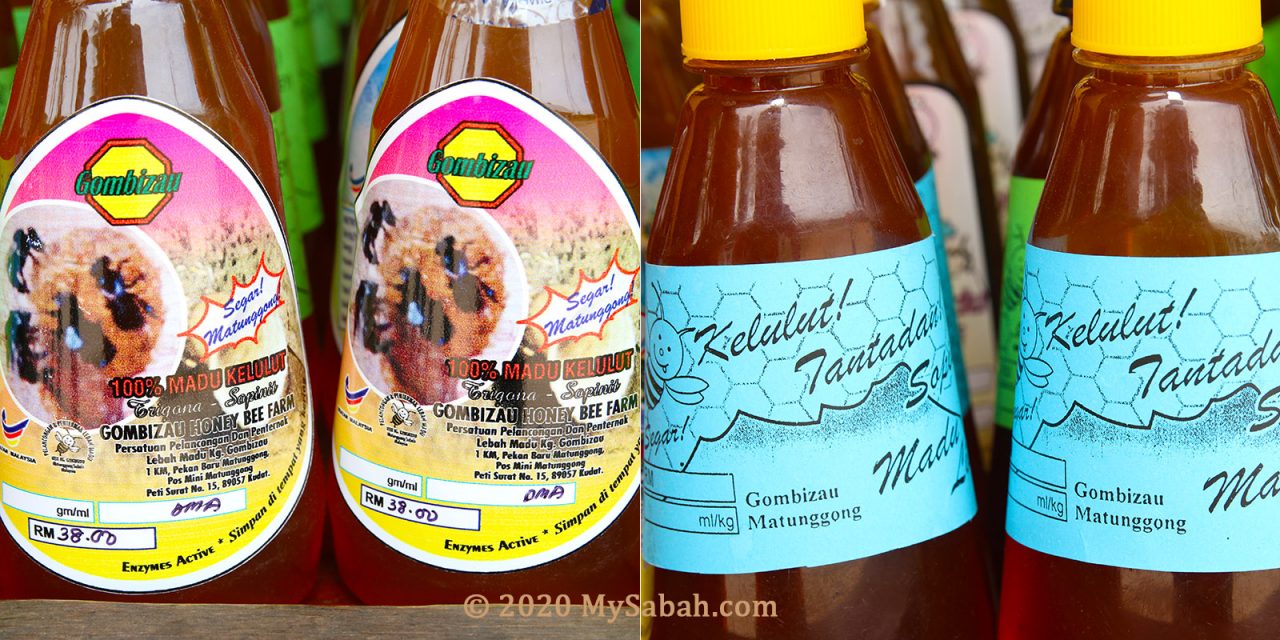
4. Price
In most cases, a standard grade honey costs less than RM90 per Kilogram. Kelulut honey is sold for RM120 to RM150 per Kg locally.
5. Nutrients
According to the Malaysian Agricultural Research and Development Institute (MARDI), stingless bee honey is twice as nutritious as ordinary honey. In a Scientific Reports published on 22 July 2020, the researchers found that up to 85% of their sugar is trehalulose, which is a rare and healthy sugar that is “friendly” for diabetes and doesn’t cause tooth decay.
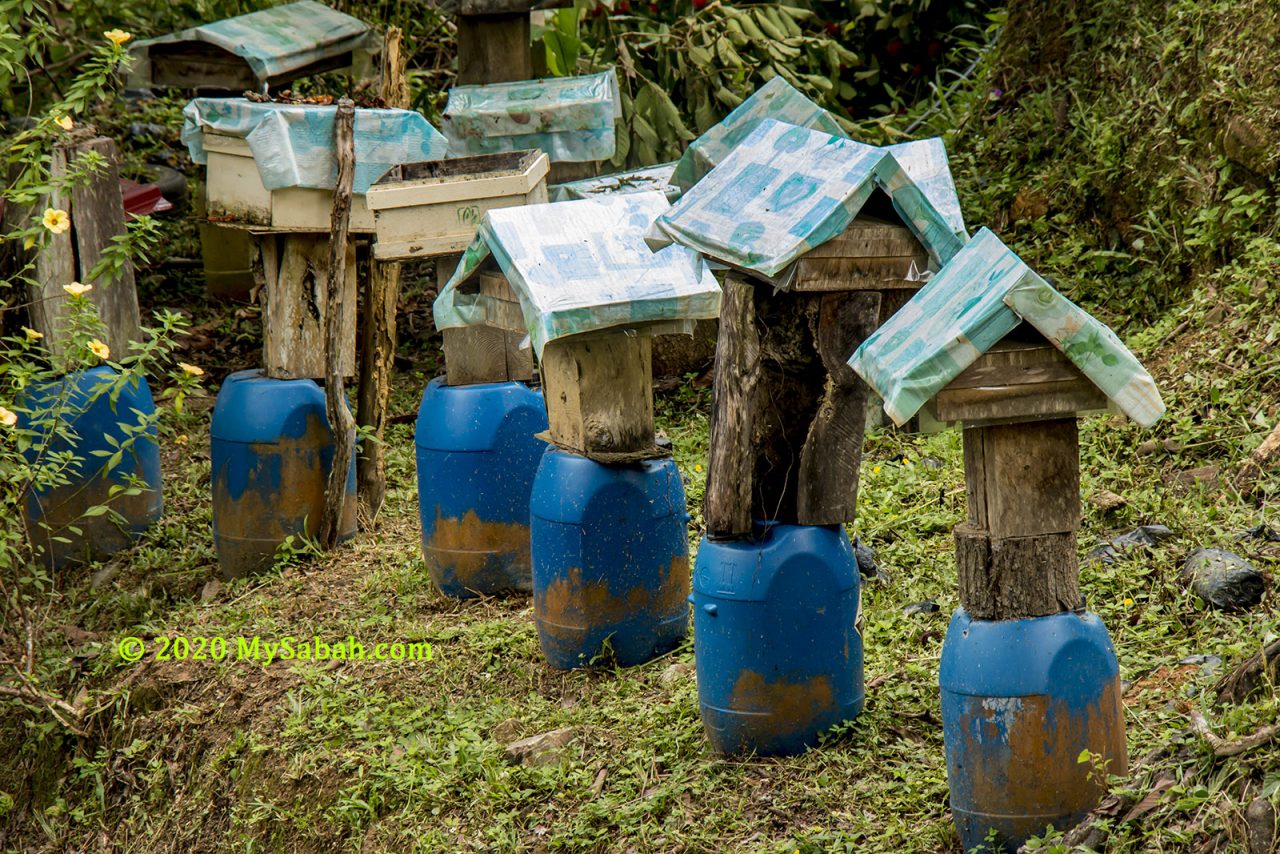
6. Health Benefits
The main selling point of kelulut honey is its stronger health values from anti-bacterial, anti-carcinogen and anti-oxidant properties. It has a history of traditional indigenous in treating cough, fever, cuts and rashes. Some of the claims are proven by research, just to list a few below:
- Honey contains more anti-oxidant properties (able to delay the ageing process and preventing cancer) than honey bees, as reported by MARDI.
- Stingless bee honeys have anti-inflammatory and anti-oxidant effect
- Stingless bee honey is a natural wound healing agent
- Stingless bee honey has excellent beneficial effects as anti-microbial, anti-cancer agent, improving hypertension, lipid profiles, and anti-diabetic
Locals believe having a tea spoon of kelulut honey twice a day can strengthen immune system, to prevent cold and flu.
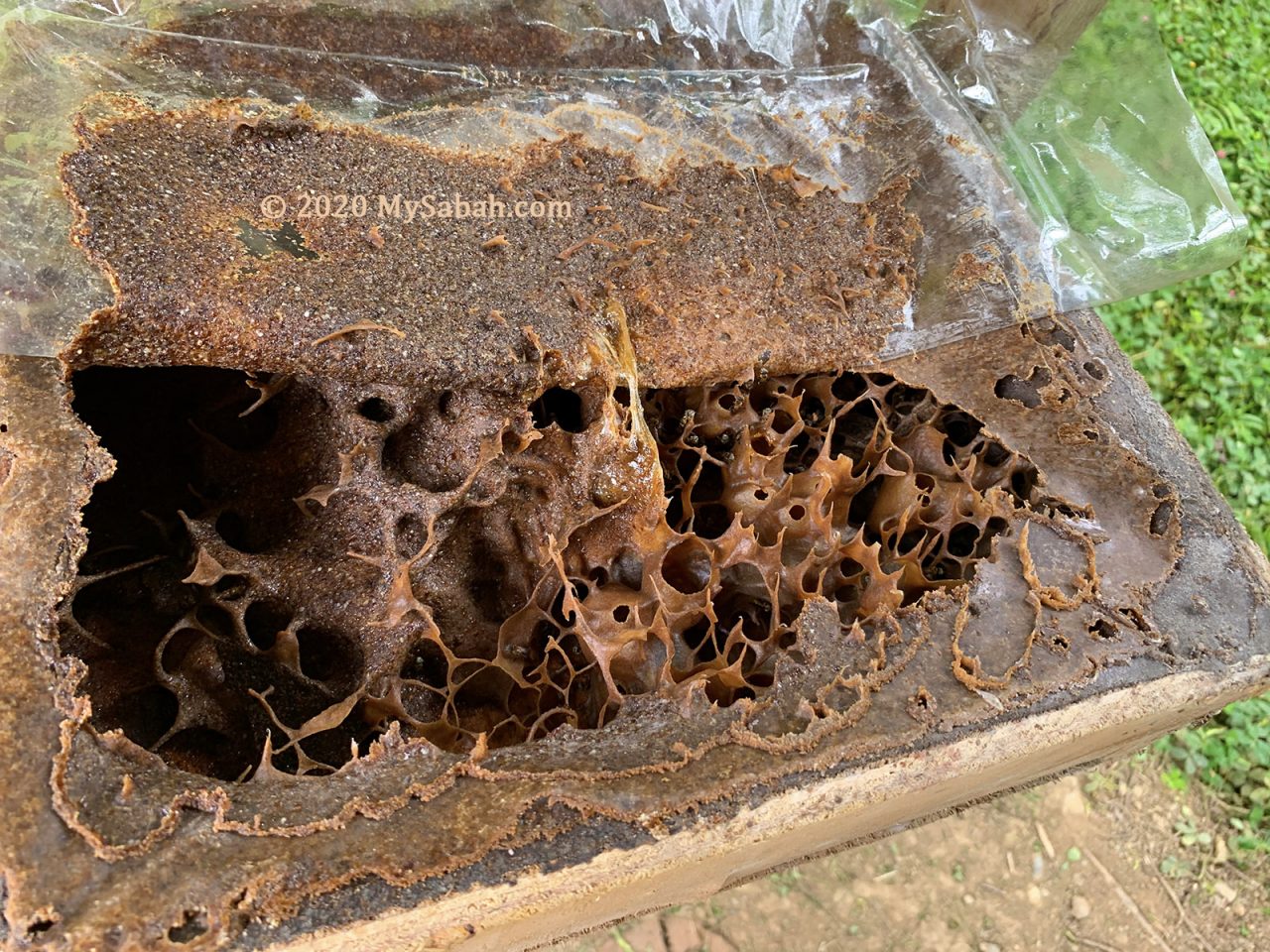
Beekeeping Method (Meliponiculture)
The rearing of stingless bee is known as meliponiculture. There are more than 38 species of stingless bees found in Malaysia, but only a few of them are suitable for beekeeping, for example, Heterotrigona itama and Geniotrigona thoracica are the most preferred species, followed by Lepidotrigona terminata and Tetragonula leviceps.
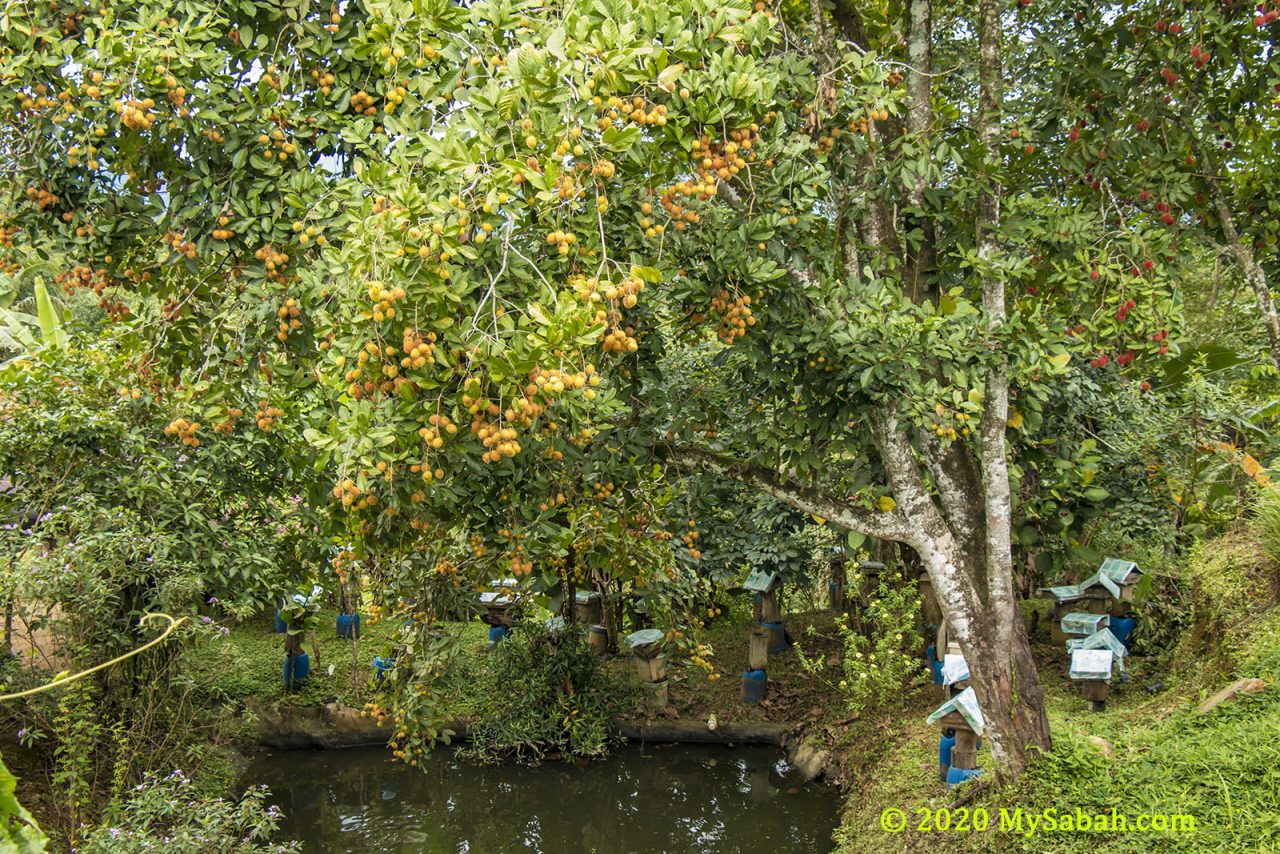
Generally kelulut is passive. To defend their home, they would attack invaders by biting, but it is more like ant bite and far less painful than honeybee sting. No bee protective suit is required for handling of kelulut. Stingless bees share similar food, behavior, and social structure with honey bees, so you can rear them like normal honey bees.
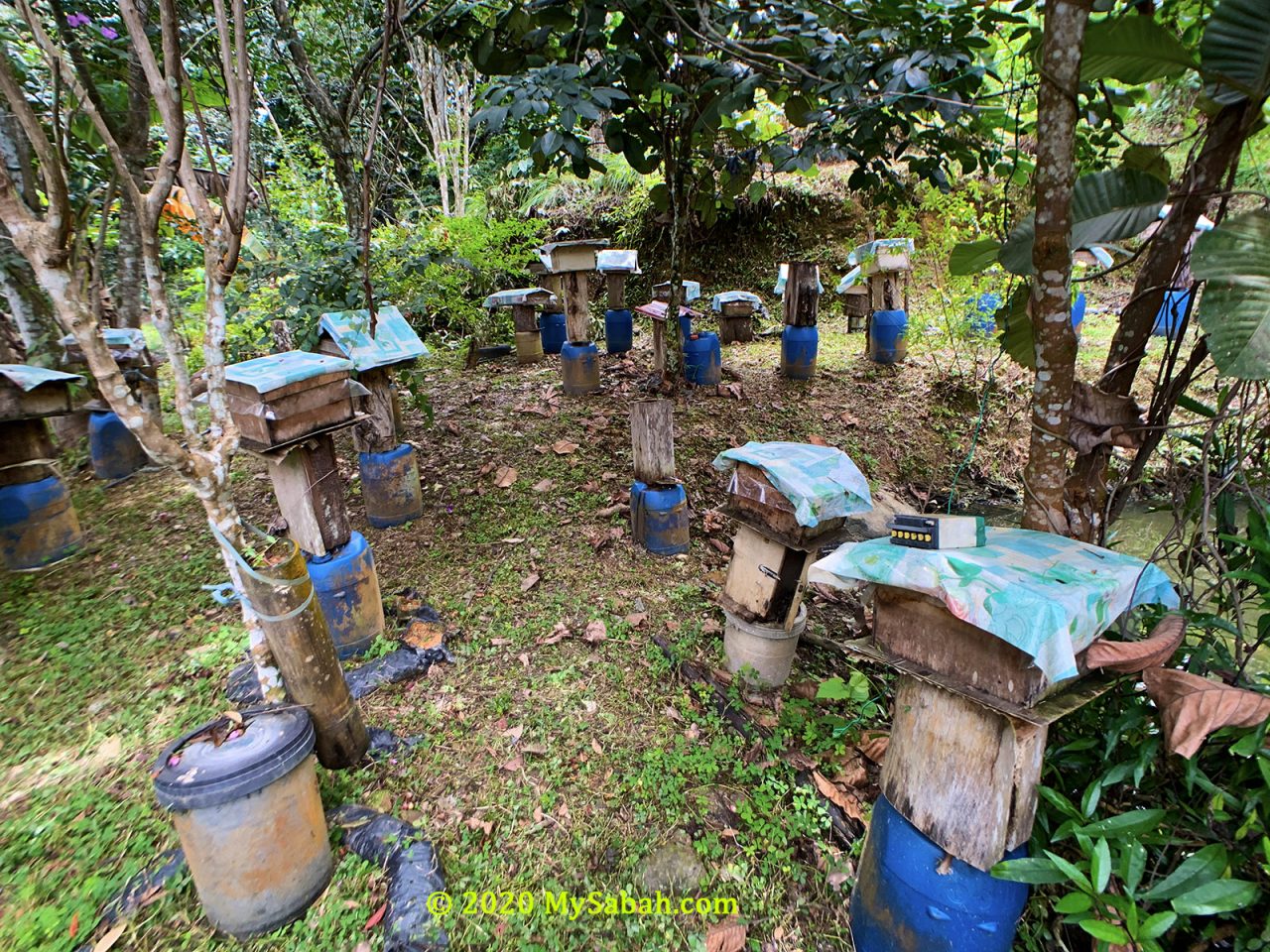
Beekeepers can house the kelulut colony in a bee house called Gelodok or transfer them to a wooden box. You can open the box periodically to harvest honey without doing too much damages to their nest. The old methods of using bamboos, flowerpots, or coconut shells as bee house would be less sustainable as beekeepers need to cut the container in half for collecting honey.
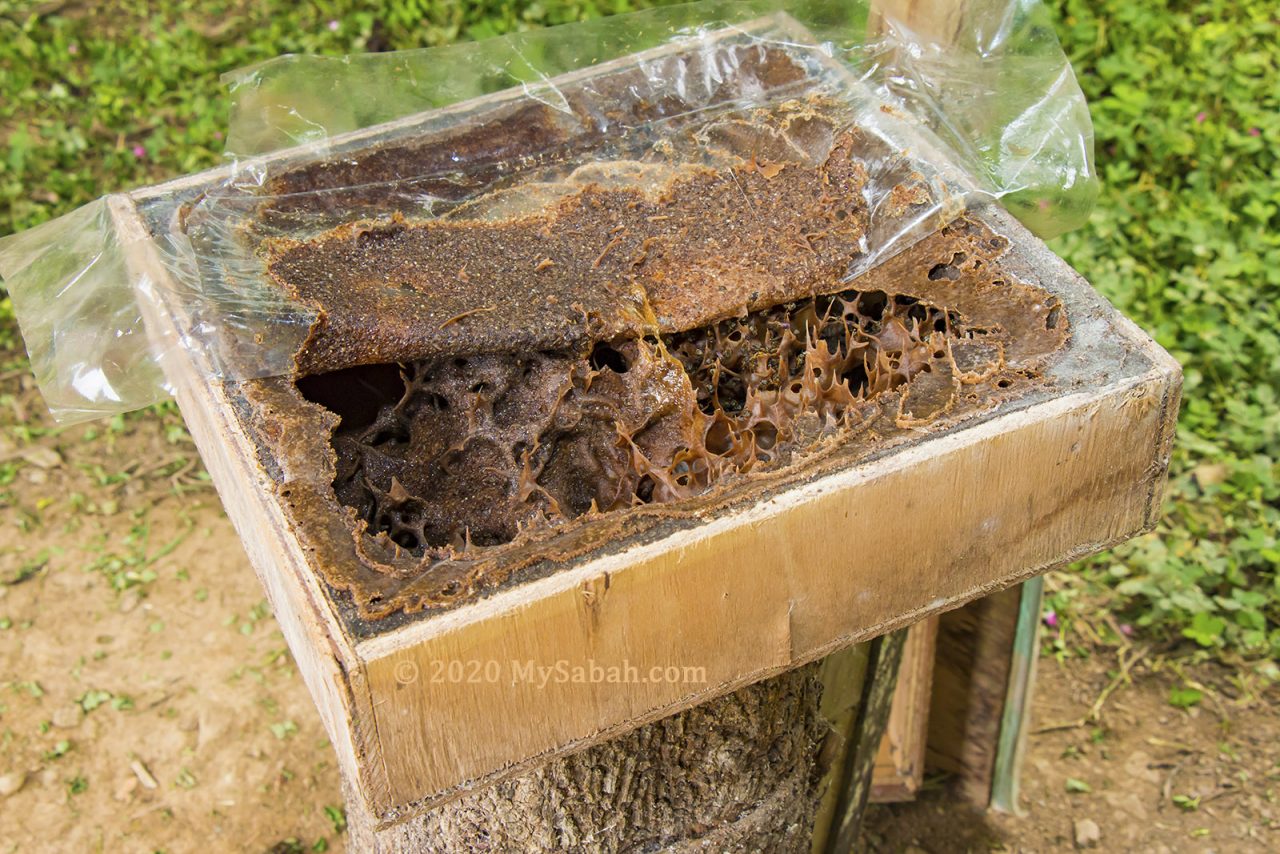
Commercial kelulut beekeeping is introduced in Malaysia in 2012. Now there are 750 to 1,000 bee farmers nationwide. Sarawak state produces the most kelulut honey, followed by Sabah and Peninsular Malaysia.
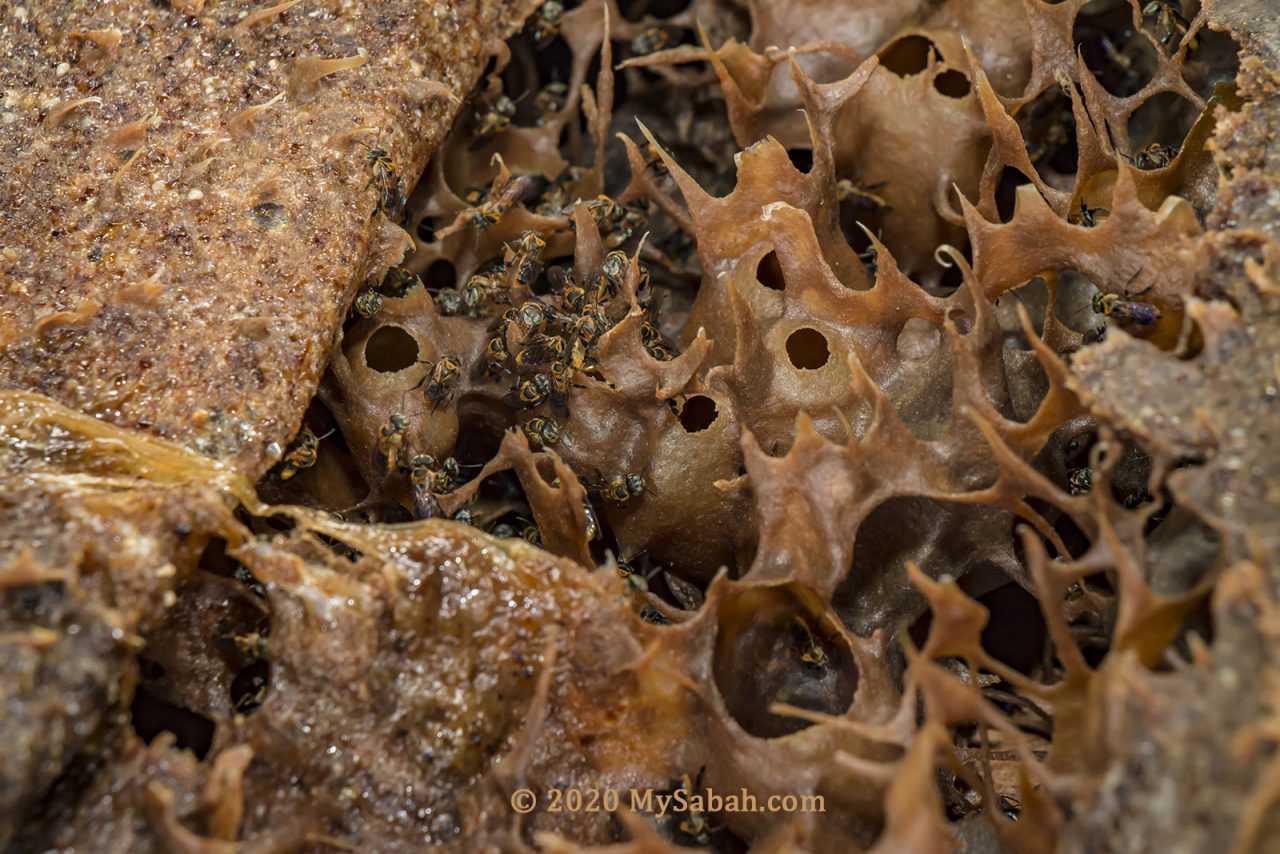
Beescaping
Bee houses are placed in shade to avoid excessive heat. Stingless bees have short flight ranges of about 500 metres (honey bees is 2 km). Therefore, for higher honey yield, the bee farm should be nearby the favourable food source of stingless bees, the following are some preferred host plant:
- Flowers: air mata pengantin or Honolulu Creeper (Antigonon leptopus), Buttercup (Turnera subulata)
- Fruit trees: rambutan, starfruit, passion fruit, coconut, durian
- Acacias, rubber and other flowering forest trees
(Note: the choice of plant can affect the taste and colors of the honey)
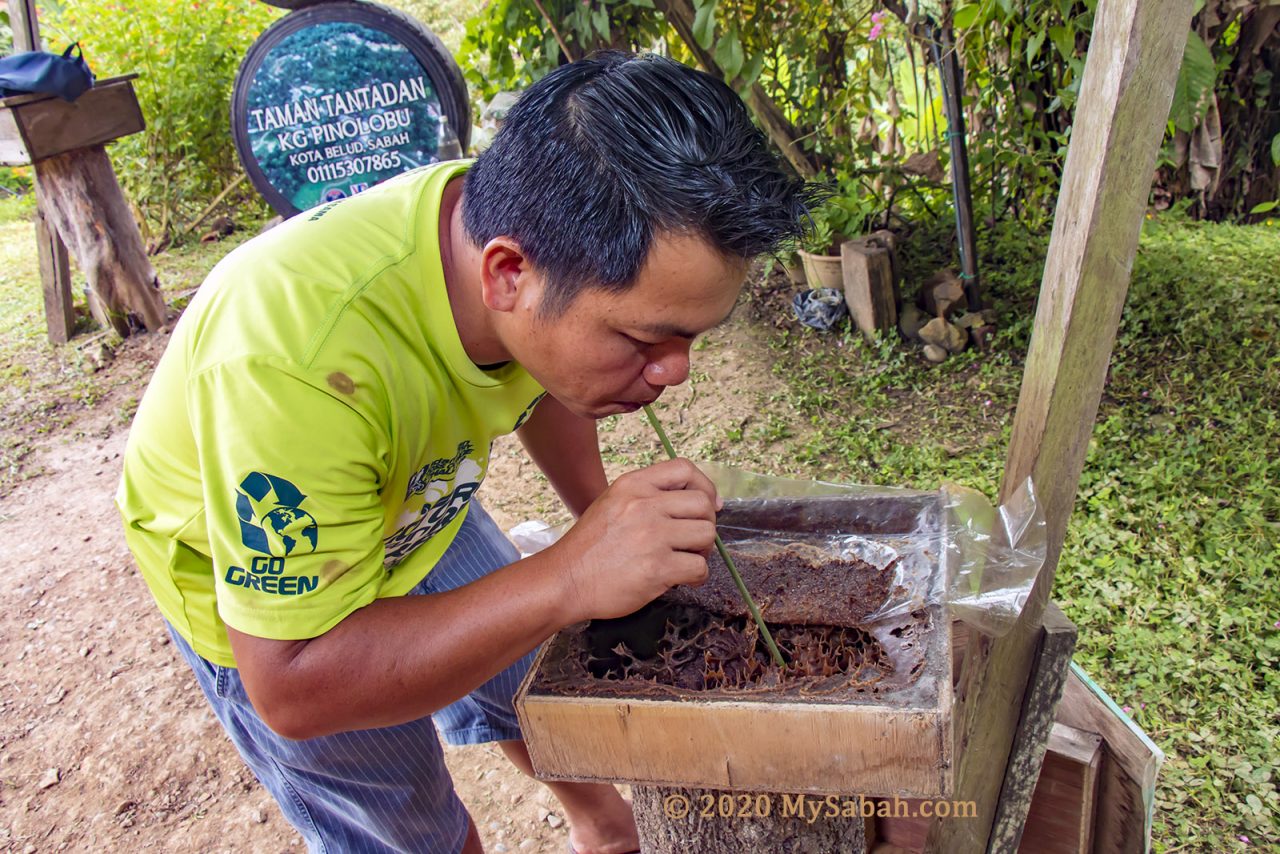
Small kelulut is vulnerable to attack and raid by bigger bees and hornets. A trick is to place some belacan (shrimp paste) near the bee hives to keep these predators away.
Got Honey, Got Money. A Profitable Business
Malaysia government has initiated the National Kelulut Honey Industry Development Plan 2020-2030 that aims to make the kelulut honey industry a new source of stable and sustainable income because kelulut beekeeping can generate good income quick without high capital and advanced skill as a start. You can get the kelulut nest from the wild or buy it from local open market (tamu). A new colony normally starts producing honey after three months.
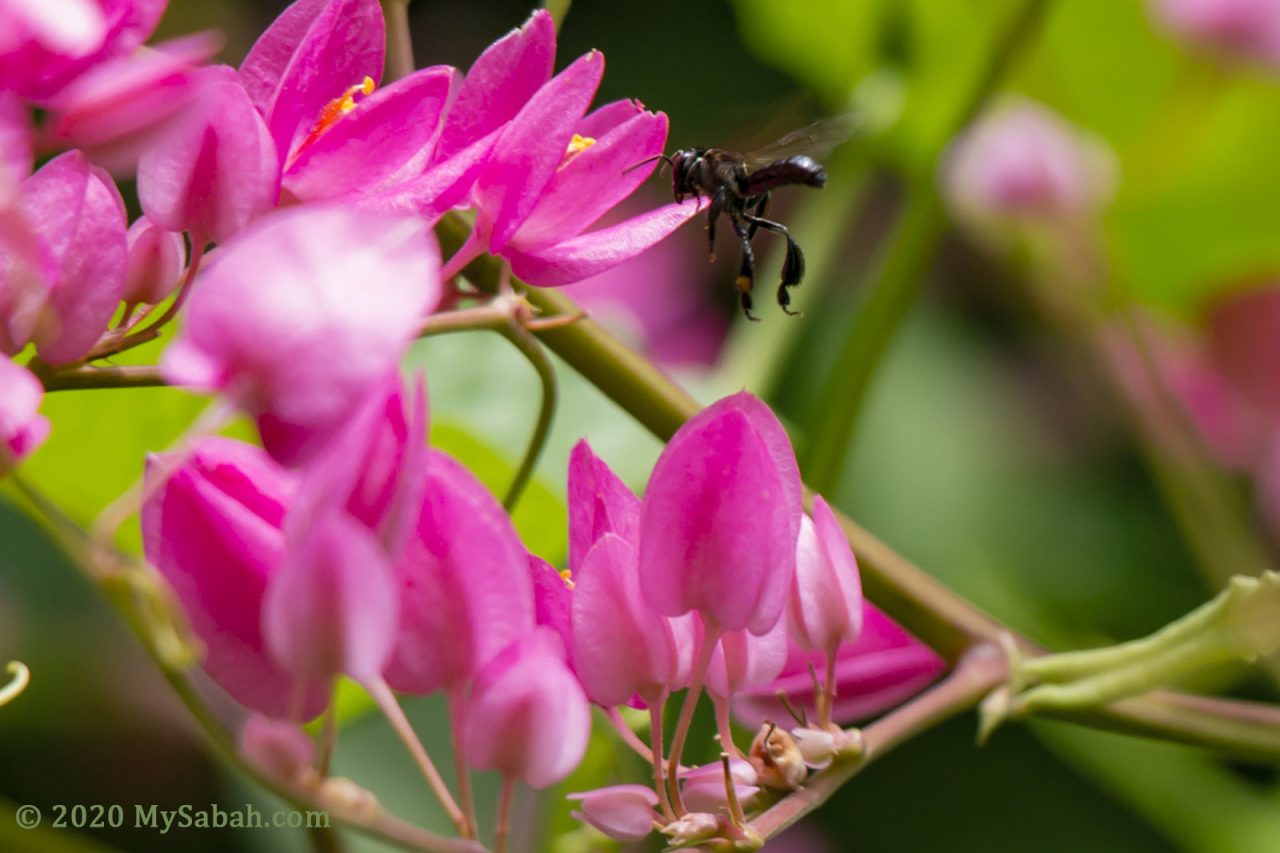
If you have RM1,500, you can start a small farm of three stingless bee colonies. Each kelulut nest produces about 0.33 to 2 Kg of honey monthly. In Sabah, beekeepers earn about RM60 per kg of kelulut honey, which is marketed for RM120 to RM140 per Kg in the shops after processing and packaging. You can build a bee farm of 50 to 1,000 bee colonies with a starting capital of between RM40,000 and RM50,000, that can bring you a monthly income of RM5,000 to RM30,000.
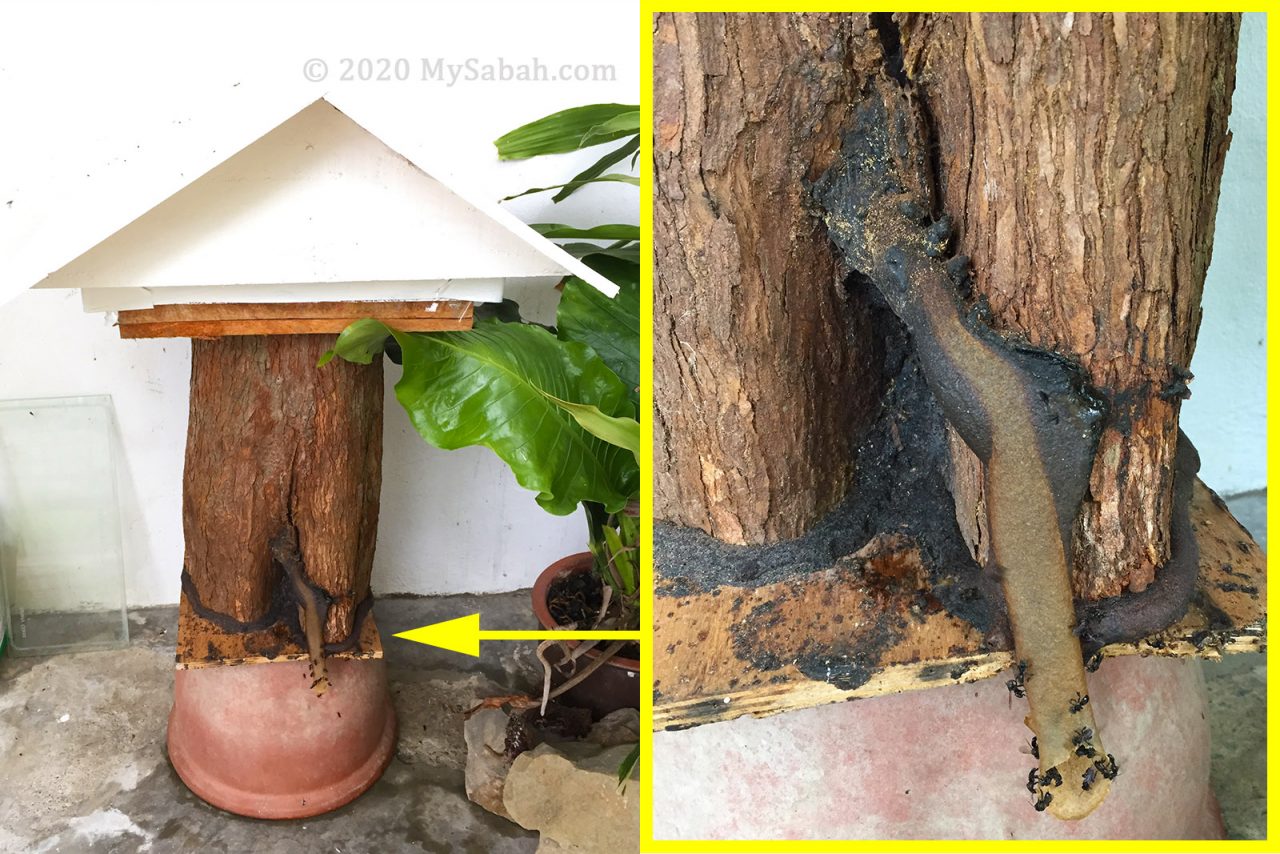
Currently, the total market volume of Malaysia’s kelulut honey industry is only RM33.6 million while the market potential is about RM67.2 million. According to data provided by the Agriculture Department in 2017, the total kelulut honey production in Malaysia stood at 134,244 kilograms. From what I heard, the demand for stingless bee honey is high and most go to local consumption. The needs for kelulut honey will grow when it becomes more popular.
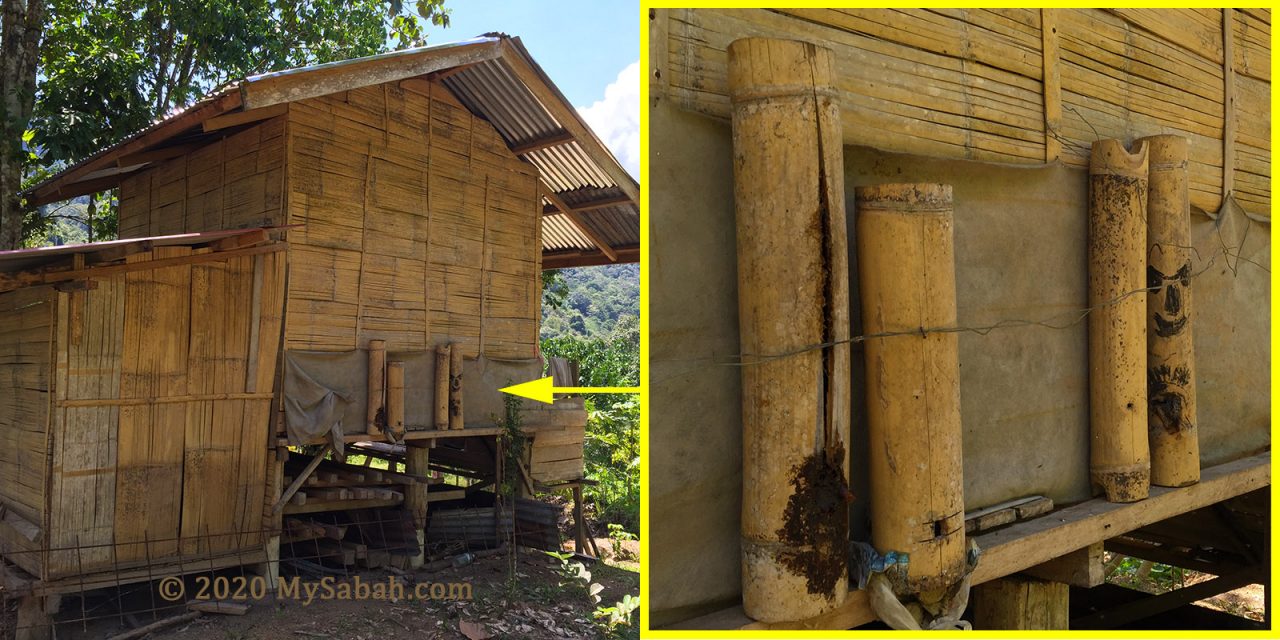
Besides, about 1,000 downstream products can be made from honey, propolis and pollen from kelulut nests. The ingredients can be used in health supplements, cosmetics, skincare, toothpaste, face cream, essential oil, hand cream, skin disorder ointments, lip salve, etc. These byproducts will increase the revenue generated from bee farms.
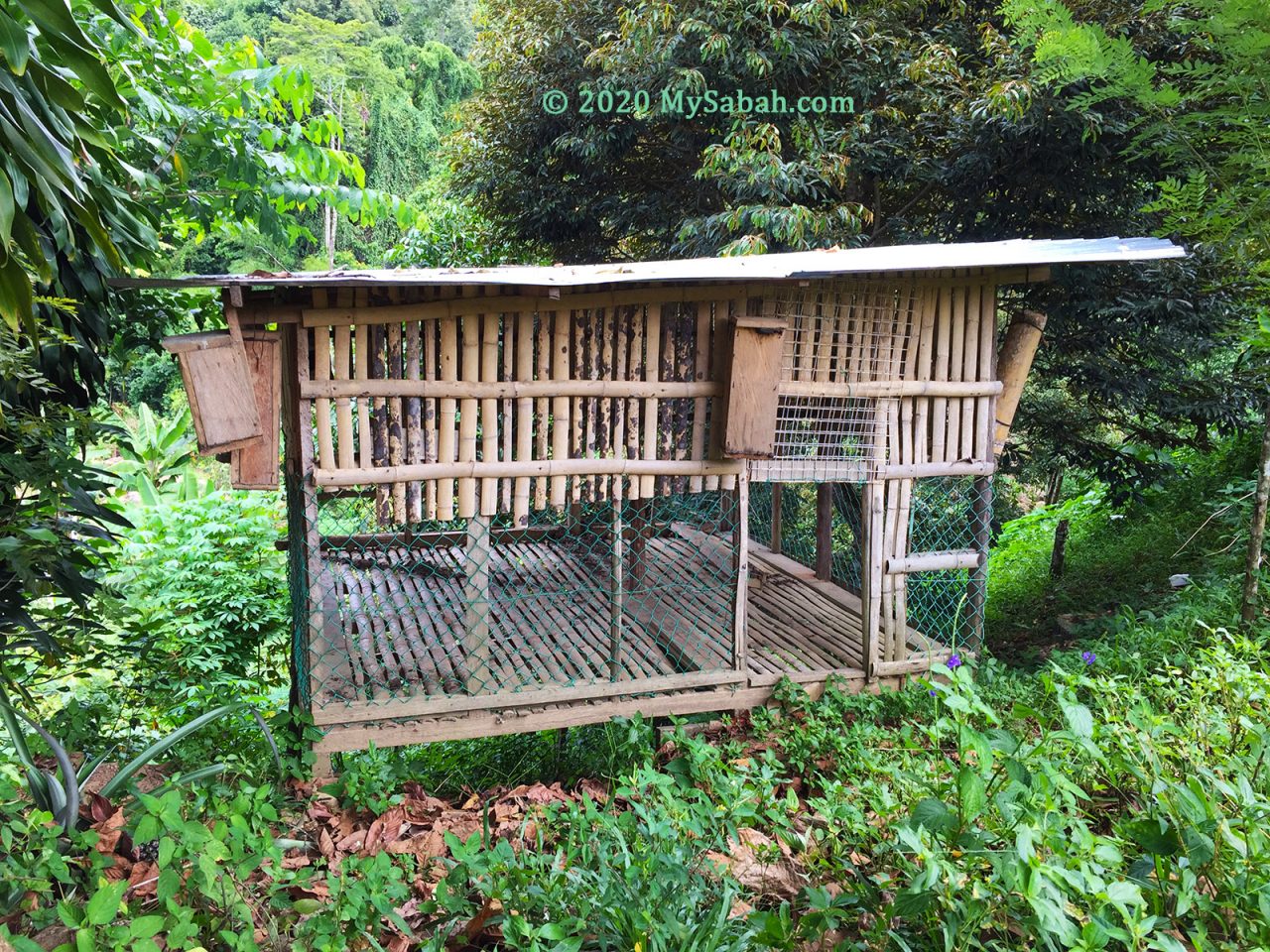
Training and Funding
Interested in starting a kelulut farm? The organisations below might be able to help you. Good luck!
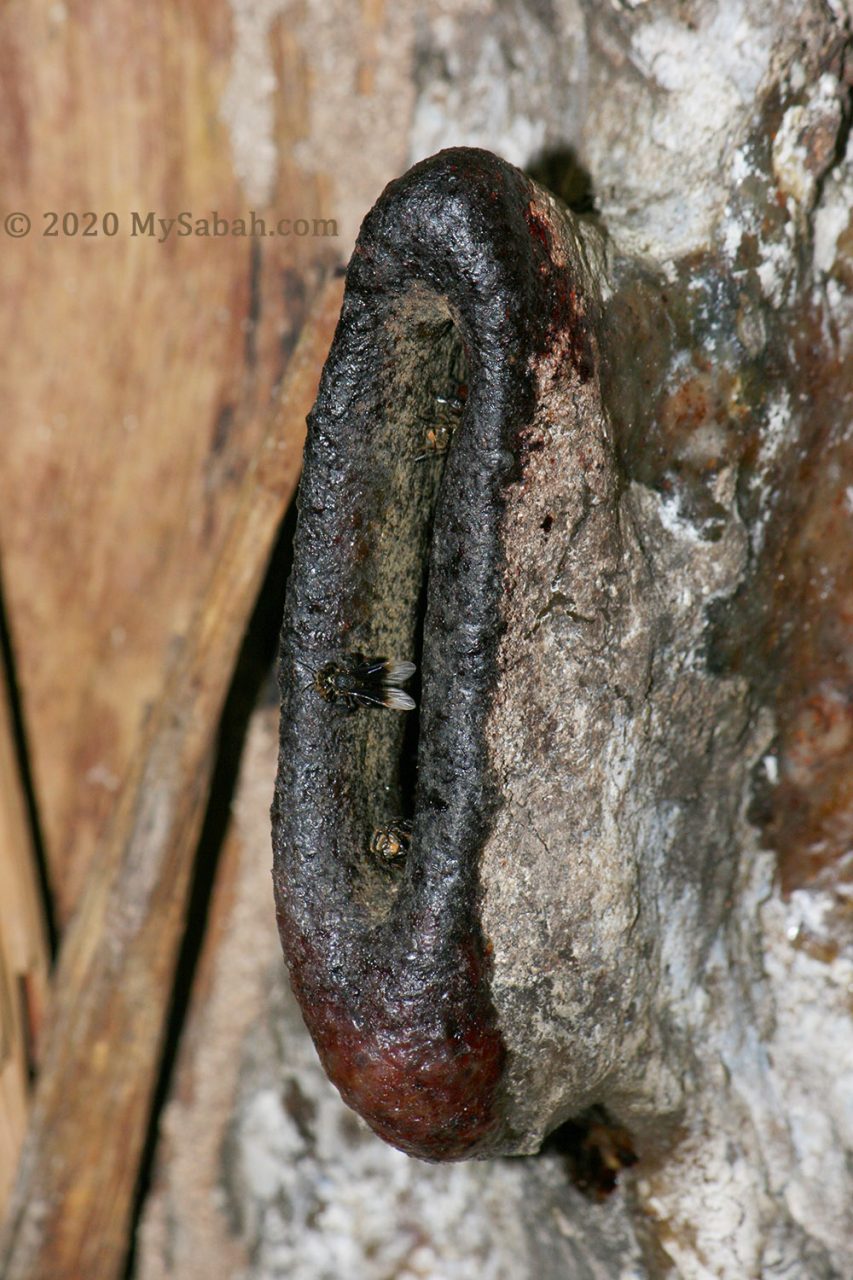
1. Borneo Honeybee Centre
In Sabah, the State Agriculture Department and Koperasi Pembangunan Desa (KPD) provide advice and conduct courses for stingless bee farming. KPD opened the Borneo Honeybee Centre in Sikuati, Kudat (north of Sabah). The Borneo Honeybee Centre is a centre for collecting, processing and bottling of honey and also conducted the bees farming courses (for about RM350). This 8.5-acre complex has various facilities such as Honey Processing Factory, Bee Gallery, Honeybee Souvenir, Honeybee Café and guided tour for those who want to learn more about beekeeping.
Facebook: BORNEOHONEYBEECENTRE
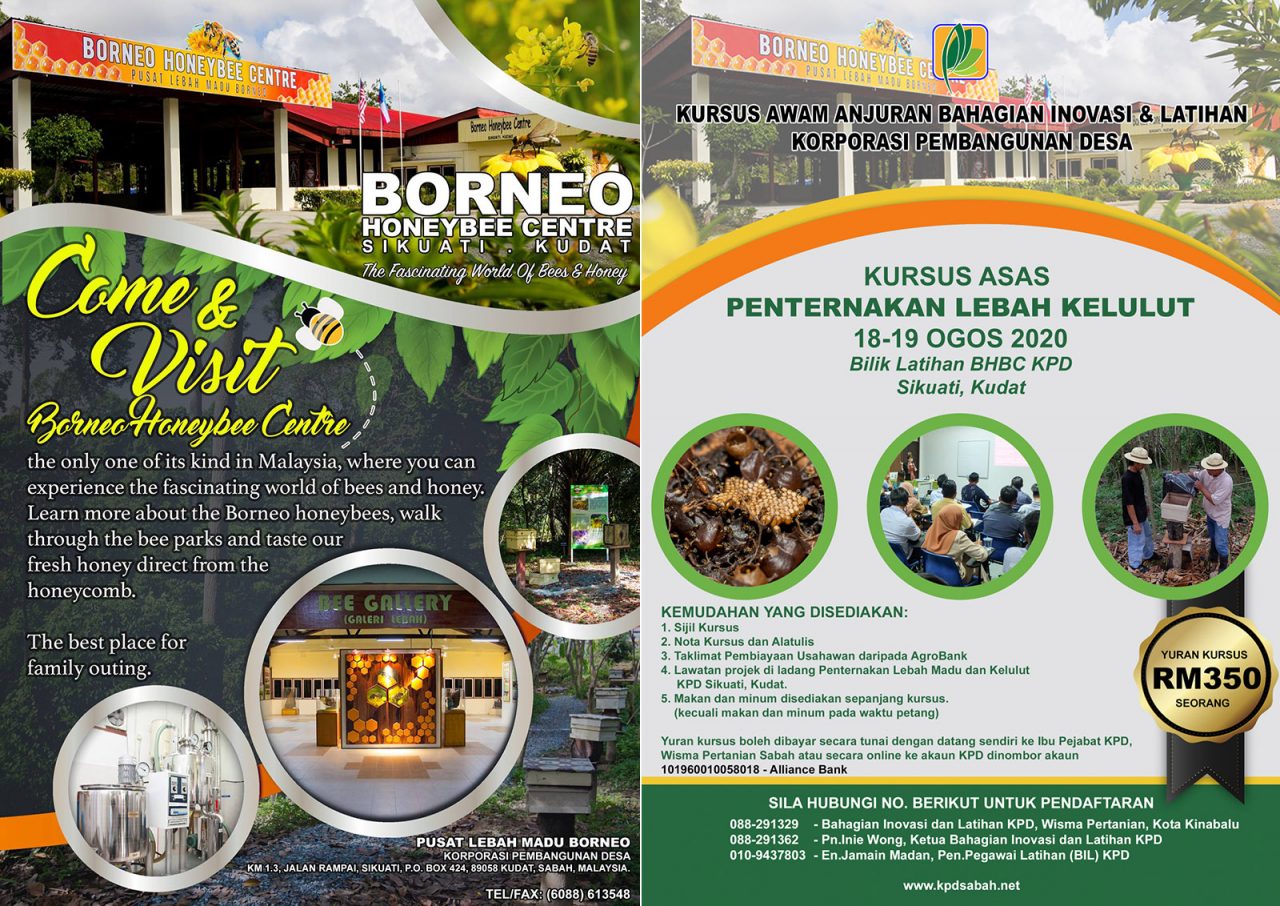
2. Akademi Kelulut Malaysia (AKM)
Located in Bangi, Selangor, this company provides beginner to advanced training on kelulut beekeeping and making of stingless bee products. They also publish some books on stingless bees.
Facebook: akademikelulutmalaysia
E-mail: akademikelulut@gmail.com
Phone: 011-1514 2620
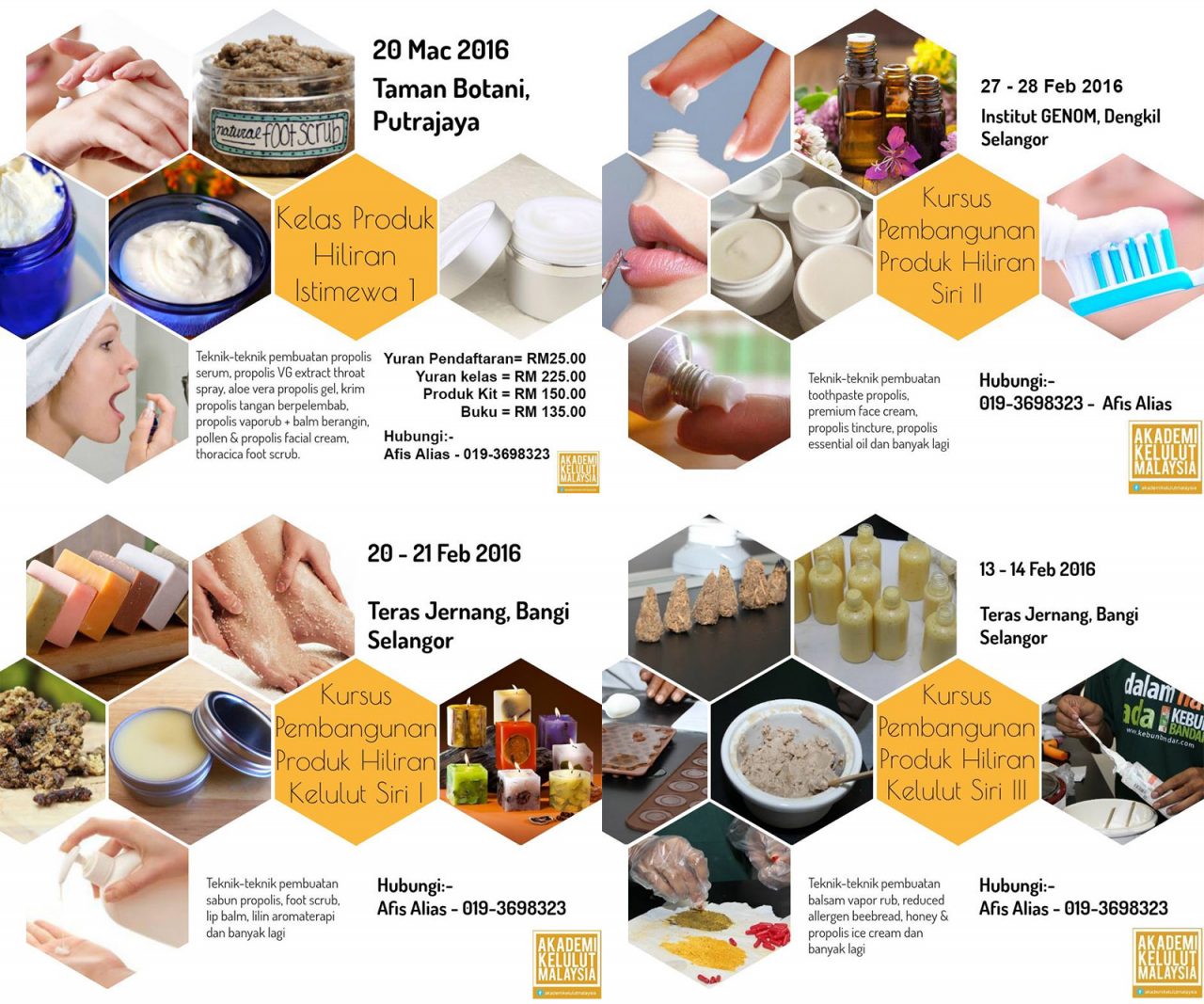
3. Malaysian Agricultural Research and Development Institute (Mardi)
MARDI is a government agency established with the main objectives of generating and promoting new, appropriate and efficient technologies towards the advancement of the food, agriculture, food and agro-based industries.
Facebook: mardimalaysia
Website: mardi.gov.my
Twitter: mardimalaysia
Blog: blogmardi.wordpress.com

4. Young Agropreneur Programme
Implemented by Ministry of Agriculture and Food Industries’ (MAFI) in 2016, the Young Agropreneur Programme aims to encourage the involvement of youths (18 – 40 years old) in entrepreneurial activities in the agricultural sector’s value chain. If you are eligible, you can apply funding at: mafi.gov.my.
Photos taken in Sabah, Malaysia Borneo
